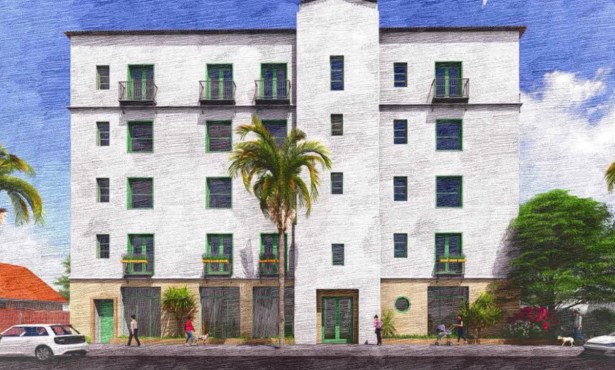Closing the Revolving Door of Homelessness
When otherwise sane elected officials throughout the South Coast
eagerly announced a few months back that they were embarking on a
“10-Year Plan to End Chronic Homelessness,” we assumed the worst.
Having known some of the chronically homeless during the past 20 or
so years — and having watched generations of supervisors and city
councilmembers grapple with the problem — we were fairly confident
that even the best laid plans could not help, let alone end, such
an intractable situation. Our skepticism was intensified by the
fact that these 10-Year Plan approaches originated with the Bush
administration, the same brain trust that has hacked affordable
housing programs so severely. The waiting list for such apartments
is 60 months in Santa Barbara. Little wonder that we initially
thought the whole idea would amount to nothing more than a cynical
feel-good photo opportunity.
We may have jumped the gun. Propelling the 10-Year Plan craze is
the realization that most homeless programs have become revolving
doors — as expensive as they are ineffective — shuttling the
chronically homeless from our streets, to our jails, to our
emergency rooms, and back to our streets again.
In S.B. County, the numbers are startling. Based on a new study
just released by former County Health Director Roger Heroux, Santa
Barbara County, its cities, and its non-profits spend $36 million
per year dealing with the homeless in one way or another. Eight
million of that is spent each year on the county’s biggest homeless
shelters. Another $4.7 million is spent keeping about 150 homeless
men and women behind bars at the county jail at any given time. We
don’t know what crimes these people have committed. Given that jail
accommodations cost $86 a night, we strongly suspect that the
community would be better served if many such inmates were housed
in detox facilities — or receiving mental health
treatment — instead. That would go a long way toward relieving the
overcrowding problem now plaguing the county jail. The five county
departments that comprise Santa Barbara’s official safety net spend
about $6 million per year on homeless services. The City of Santa
Barbara spends another $6 million. That doesn’t include the nearly
$8 million it costs Cottage Hospital, Marian Medical Center, and
the Lompoc District Hospital combined to treat homeless in their
emergency rooms.
Clearly, we’re not stingy. And despite their dismal
circumstances, many homeless people are helped. But last year, 39
homeless people died in the City of Santa Barbara alone, done in by
the ravages of street life, the demons of mental illness, and the
scourge of addiction. Given that roughly one-tenth of the homeless
population consumes about 50 percent of the available resources, we
must agree that we should reexamine how we are spending our money.
When the county supervisors voted Tuesday to lure Roger Heroux out
of retirement, hiring him for one year to knock down professional
“silos” separating county departments now confronting different
aspects of the same problem, we’d say that’s a good start.
Especially since his salary is coming from the budgets of five of
those departments, including the sheriff’s office.
Despite our skepticism about 10-year plans in general — and
plans “to end chronic homelessness,” in particular — we find
ourselves cautiously optimistic that this latest planning process,
just now getting underway, can yield meaningful change. One
particularly promising new approach is a model used effectively in
other cities.
Called “housing first,” it calls for creating new housing to
replace the hundreds of cheap hotel and motel rooms lost to
gentrification during the past 15 years. But instead of flop houses
and eyesores, these new units will be staffed with social service
professionals whose aim is to get as many people permanently off
the street as possible. And when poor, or alcoholic, or mentally
ill people are no longer living on the streets, but living in
decent conditions with therapeutic help available, then they will
no longer be homeless. Maybe this is just a bureaucratic fad
masquerading as a new solution. But given the vast sums of cash
we’re spending right now — and the results we’re not
getting — maybe it is time to try something new. — Nick
Welsh, Executive Editor



